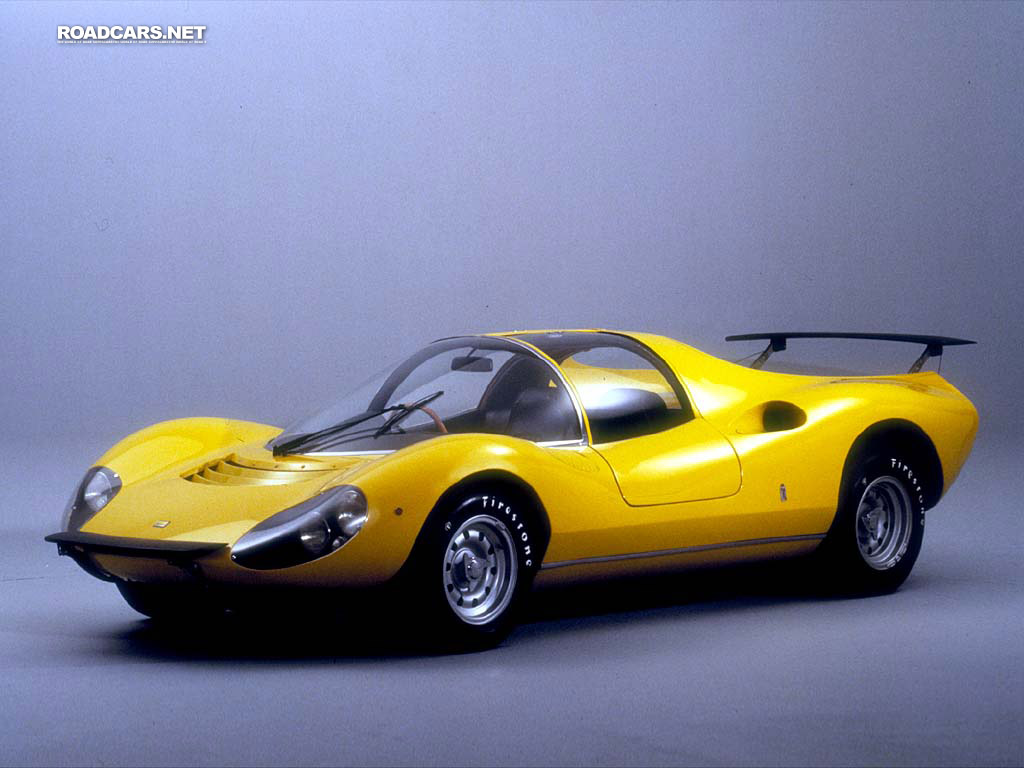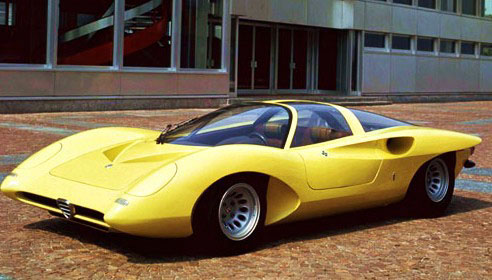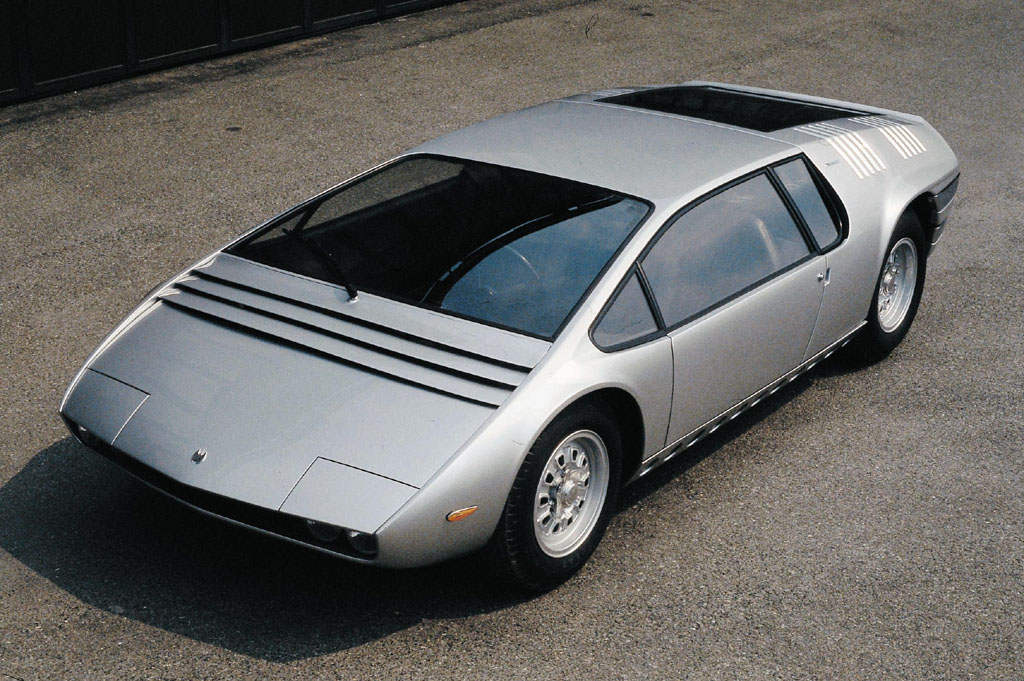Arguably the inception of the concept 'supercar,' these aerodynamically driven performance machines were the trendsetters in the field of automotive design. Italdesign, Bertone, Zagato, Ghia and Pininfarina were the forefathers of this movement--their designs would resonate over years to come, shaping a new genre of automobile.
1967 Ferrari Dino 206 Competizione
![Image]()
This lightweight track star begins to show the integration and homologation of aerodynamics and a massive tear-drop cabin that yield a car with both sex appeal and pragmatism.
1969 Alfa Romeo 33-2
![Image]()
This Pininfarina design, though arguably the forefather to Bangle's 'flame surfacing' (I kid
![Image]()
) is another example of a design language that is so widely accepted today and associated with the supercar language. With big flares, deep cuts for ventilation for the Mid-Engine layout and a Mach5-esque nose, this car was ahead of it's time. Queue 'Speed Racer' theme song now.
1968 Bizzarrini Manta
![Image]()
A unique blend of curves and wedges, the Manta has one of the most unique shapes I can recall. The front-aligned seating position connects the driver to the road and keeps the majority of the car's weight between the axles.
1970 Ferrari Modulo
![Image]()
Well, I'm just going to let you guys decide this one. The roof/door 'module' is completely irrational, but there are some elements that make this a pretty unique and attractive automobile. The covers on the rear wheels are an interesting touch, and I've always wanted to be able to see directly above me when sitting in the driver's seat.
1972 Maserati Boomerang Classic
![Image]()
I had to throw a curve-ball into this mix, and what better car than the Boomerang Classic. What a strangely engineered vehicle. It's not quite attractive, but it's not exactly ugly. The design language is fairly cohesive and the double-track windows are a unique feature, especially for a supercar. But there's no doubt that with the 310hp V8, this thing could go.
1970 Lancia Stratos Zero
![Image]()
To conclude this unfounded diatribe, I want to discuss the Lancia Stratos Zero. Most people are going to say that in order to fully appreciate this movement/style of design, I should include the Countach, but we all know what it looks like. I wanted to depart from that.
The Stratos Zero is one of the more attractive cars to grace this era, with its monolithic style and unique surfacing technique that really makes the car look like a road missile. It's undoubtedly the most planar design I've ever seen, but I think it's executed successfully. Not to mention, this car was the forefather to the Stratos HF, the world renowned rally car that would dominate Group 4 and Group 5 rally for years to come.
1967 Ferrari Dino 206 Competizione

This lightweight track star begins to show the integration and homologation of aerodynamics and a massive tear-drop cabin that yield a car with both sex appeal and pragmatism.
1969 Alfa Romeo 33-2

This Pininfarina design, though arguably the forefather to Bangle's 'flame surfacing' (I kid

1968 Bizzarrini Manta

A unique blend of curves and wedges, the Manta has one of the most unique shapes I can recall. The front-aligned seating position connects the driver to the road and keeps the majority of the car's weight between the axles.
1970 Ferrari Modulo
Well, I'm just going to let you guys decide this one. The roof/door 'module' is completely irrational, but there are some elements that make this a pretty unique and attractive automobile. The covers on the rear wheels are an interesting touch, and I've always wanted to be able to see directly above me when sitting in the driver's seat.
1972 Maserati Boomerang Classic

I had to throw a curve-ball into this mix, and what better car than the Boomerang Classic. What a strangely engineered vehicle. It's not quite attractive, but it's not exactly ugly. The design language is fairly cohesive and the double-track windows are a unique feature, especially for a supercar. But there's no doubt that with the 310hp V8, this thing could go.
1970 Lancia Stratos Zero

To conclude this unfounded diatribe, I want to discuss the Lancia Stratos Zero. Most people are going to say that in order to fully appreciate this movement/style of design, I should include the Countach, but we all know what it looks like. I wanted to depart from that.
The Stratos Zero is one of the more attractive cars to grace this era, with its monolithic style and unique surfacing technique that really makes the car look like a road missile. It's undoubtedly the most planar design I've ever seen, but I think it's executed successfully. Not to mention, this car was the forefather to the Stratos HF, the world renowned rally car that would dominate Group 4 and Group 5 rally for years to come.










